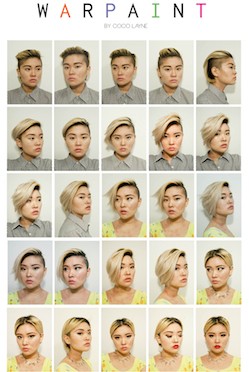Ella Mahony completed the Union Semester program in Fall of 2013. A longer version of this essay won an award for the “Making Work Visible” Labor Arts Contest.
In September 2013 Reuters reported that in August the pace of growth in the U.S. services sector hit an eight-year high. The National Employment Law Project found in 2012 that 43% of the jobs created during the economic recovery were in low-wage service industries including retail, food services and employment services. Increasingly, available jobs are concentrated in these sectors which require both frequent interfacing with the general public and pressure to embody a company’s “brand”. Businesses who wish to differentiate themselves from exploding competition may increasingly put the weight of “branding” and providing a specific experience for their clients onto their employees. The unwaged and normalized nature of additional emotional, sexual, and appearance-based labor makes this a low-cost option for companies in a shareholder-beholden landscape. Businesses can skimp on branding and expand the ways in which workers are disciplined.
American Apparel is one retailer notorious for its racy advertising, and has become an example of how a company’s “brand” affects workers on the shop floor. “We’re hiring in New York.” announces one AA ad over a photograph showing a young woman in her underwear, lounging in a bed and flirtily blowing bubble gum at the camera. The message is: when you work for us, you become this person. Alternative, sexually available, exotic: these are the gendered qualities the company pressures their female employees to present to customers. This type of unpaid “image work” has especially acute consequences for LGBTQ people in the service economy.
The most obvious and acute effect is how it pushes out individuals who are gender non-conforming and transgender who cannot or do not wish to “pass” as a cisgender man or woman in order to fit the requirements of particular positions. This is especially urgent considering the rates of unemployment for young trans* individuals. A 2011 survey found that unemployment rates for trans and gender non-conforming people was 14%, double the national average. For transgender people of color the rates went up to four times the national average. Just as women of color face a “double tax” on their earnings for their gender and race, “Injustice at Every Turn”, a 2011 report on transgender discrimination, found that “discrimination was pervasive…yet the combination of anti-transgender bias and persistent, structural racism was especially devastating”. Almost half of respondents said they had experienced being fired, not hired or denied a promotion for being transgender or gender non-conforming. What results is a transgender homeless rate mirroring the unemployment rate at nearly double the national average.
One young artist, Coco Layne, has explored this “image work” and its effect on LGBTQ workers in a photo series called “Warpaint”, which was inspired by her job at a conservative women’s retailer. Layne describes herself as a “hardcore feminist and valiant queer queen” who comments that “It was comical how off-brand” she was for the job. She even wore a wig for the interview to hide her undercut, in which the sides of one’s head are shaved as a queer signifier. The series is a montage of self-portraits that run the spectrum from a masculine to feminine gender presentation. In the first photo, she wears a dark collared shirt buttoned all the way up with her hair slicked back and no makeup. Throughout the montage she makes subtle changes to her appearance, such as allowing her hair to fall gently over one eyebrow, adding progressive amounts of makeup, and changing into a bright floral top until she reaches a totally feminine gender presentation.
“I identify as a femme queer woman”, said Layne in an interviewwith the Huffington Post, “Sometimes I’ll feel like being super femme and I’ll wear a lot of eye makeup and lipstick while on other days I won’t do anything besides fill my brows in”. Despite already identifying as falling somewhere on the feminine spectrum, the compulsory nature of a feminine gender presentation in her workplace revealed new elements to her ideas about gender presentation. “It’s fascinating to see the nuanced correlations between how I present myself and the way people treat me”, she says. The process, for her, went beyond a playful commentary on makeupping to confront the economic and social consequences of presenting as visibly queer or gender non-conforming.
Historically, in advocating for LGBTQ rights, labor unions have either focused on the consumer, such as Unite-Here!’s “Sleep with the Right People” campaign, or on non-discrimination clauses in contracts. But the wholesale shift to the service economy with its unique burdens on LGBTQ workers demonstrates that labor unions will need to think less conventionally about queer issues. There is already a conversation happening about the intersection of sexuality, class, and organizing. You can see it in the back-and-forth between HRC and Southerners on New Ground, in the declaration that “the work will continue” in Queers for Economic Justice’s closing letter, in LGBTQ people getting together in unions to talk about their vision for justice. The question is how to broaden this conversation and how to follow it with action and organizing.



